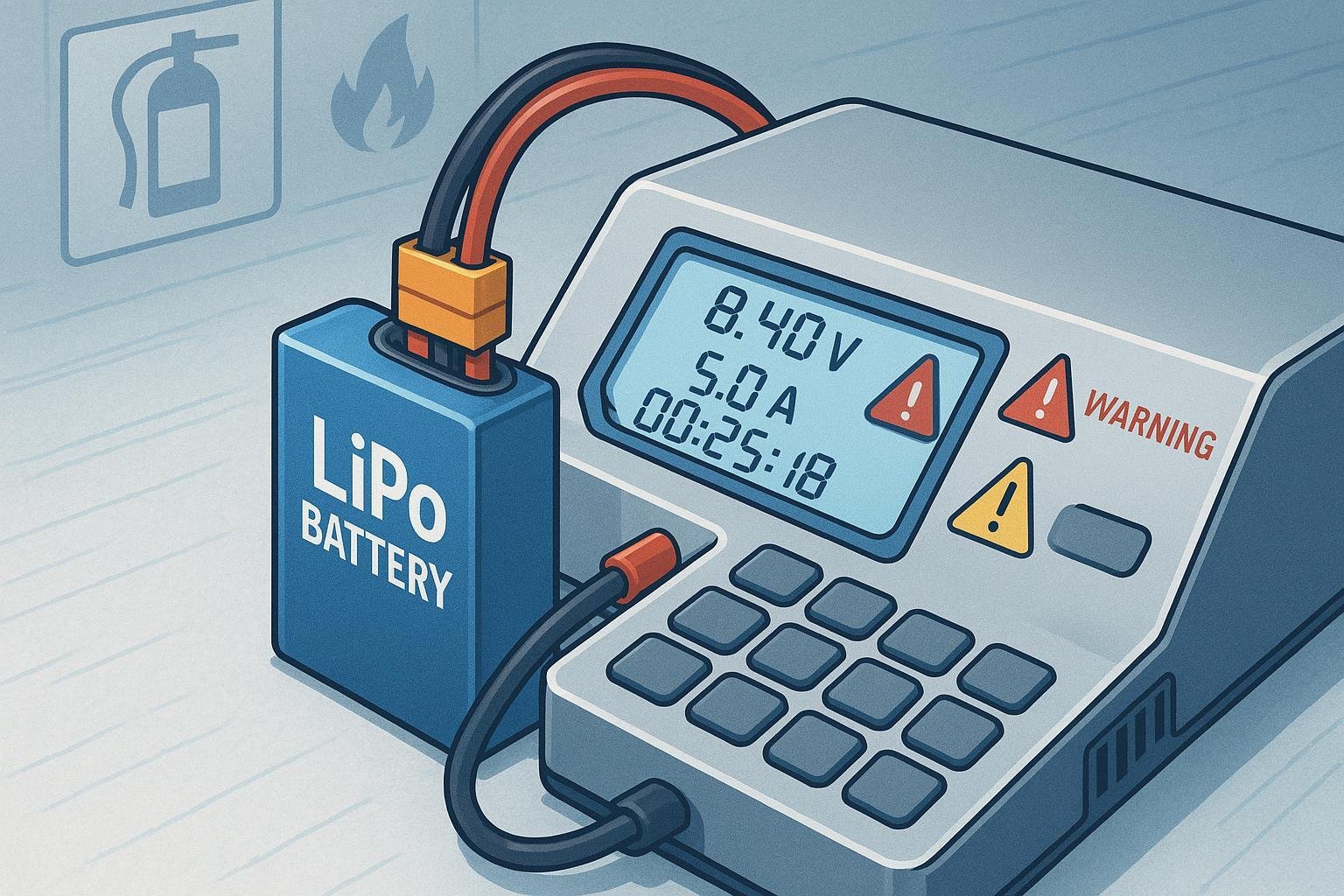
Charging LiPo (Lithium Polymer) batteries correctly isn’t just about keeping your gear running longer—it’s about safety and peace of mind. A wrong setting can mean lost battery life at best and a fire risk at worst. This guide will help you confidently and safely use charge rate calculators for LiPo batteries with a few practical steps and expert tips.
Why Charge Rates Matter—and Why Mistakes Hurt
LiPo batteries are power-dense and sensitive. Charging at the wrong rate can quickly cause overheating, swelling, or even fires (NFPA on Lithium Battery Safety). Even seasoned RC or DIY electronics hobbyists occasionally get tripped up by C-rate confusion or a bad unit conversion. But with careful calculation and attention to detail, you can maximize both your battery’s performance and lifespan.
重要: Never leave a LiPo charging unattended. Always use a fireproof charging bag or surface, and inspect your battery for damage before every charge.
Understanding the Basics: C-rate, Capacity, and Safe Charging
C-rate is simply a measure of how fast you can safely charge or discharge a battery.
- 1C means charging at a current equal to your battery’s capacity. Example: a 2200mAh (2.2Ah) battery at 1C equals 2.2A charge current.
- Most manufacturers recommend charging at no more than 1C unless your battery specifically says otherwise.
- Capacity is often marked in mAh (milliamp-hours). Divide by 1000 to get Ah (amp-hours) for all calculations.
Formula:
Charge Current (A) = Battery Capacity (Ah) × Recommended C-rate
Step-by-Step: Using a LiPo Charge Rate Calculator
1. Collect the Battery Specs
- 容量 Found on the label (e.g., 2200mAh or 2.2Ah)
- Max Charge C-rate: Should be on the battery or manufacturer’s datasheet (usually 1C)
- Cell count (S): e.g., 3S means 3 cells in series
- 化学 Confirm it’s “LiPo” (not Li-Ion, LiFePO4, etc.)
2. Choose a Reliable Calculator Tool
- UfineBattery LiPo Charge Rate Calculator – LiPo-focused and simple.
- ManlyBattery Battery Charge Time Calculator
Always double-check your entries! Inputting mAh instead of Ah, or the wrong C-rate, is a classic mistake. Most calculators let you toggle between units.
3. Enter Your Data
- Convert mAh → Ah if needed (2200mAh → 2.2Ah).
- Enter capacity, recommended C-rate (e.g., 1C), battery chemistry, and charger current limit (if known).
- Many calculators factor in efficiency (~80–90%), so expect a slightly longer charge time than just the math.
4. Review and Apply the Results
- Charge Current: Set your charger’s current (in amps) as the calculator recommends (never exceed the lower of the battery’s suggested max or your charger’s own safe limit).
- Expected Charge Time: Use as a guideline—real charge times vary with temperature, actual state-of-charge, and efficiency.
Real-World Example: Charging a 2200mAh 3S LiPo
Let’s walk through it:
- Battery: 3S, 2200mAh → 2.2Ah
- Charge at 1C: 1 × 2.2Ah = 2.2A charge current
- Typical charge time: 60–70 minutes (allowing for ~90% efficiency)
Setting Up Your LiPo Charger: Error-Proof Checklist
It’s critical to correctly set up both your hardware and the charger interface:
- Balance Mode: Always charge LiPos in balance mode. Connect both the main leads and the balance lead.
- Input Parameters:
- Battery Type: LiPo
- Cell Count: Match the series (S) number—double check!
- Charge Current: As calculated (never “max” unless battery says so!)
- Safety Features: Enable timer shutoff, temperature cutoff if your charger supports it.
- Inspect: Check that the battery isn’t swollen or warm before you start—if in doubt, don’t risk it.
Monitoring and Troubleshooting: What to Watch For
Even with the right numbers, things can go wrong. Here’s what to watch for:
- Battery Gets Hot: STOP charging. Let it cool, inspect for swelling or leaks, and check you’re charging at 1C or less.
- Swelling/Puffing: Discontinue use and isolate the battery immediately (ExcelRC Safety Warnings).
- Charger Errors: Double-check cell count, chemistry, connections, and try a reset.
- Unusual Smell or Smoke: Unplug immediately and move to a safe, ventilated area.
- Balance Connector Doesn’t Register: Inspect for wire damage; replace or check if your charger can detect each cell individually.
Pro tip: I always physically label the charge current on each battery pack. From experience, it cuts down on setup mistakes, especially when juggling multiple battery sizes.
Maximizing Performance and Longevity: Proven Best Practices
- Always charge at or below 1C unless you’re absolutely sure your pack is rated for more.
- Never store LiPos fully charged or fully empty. Keep them at 3.8V/cell if not using them within a few days.
- Log charge cycles and note any swelling, unusually fast charging, or drop in flight/run time.
- Pick chargers with these features: Overcurrent protection, temperature monitoring, balance charging, clear digital readouts, and (bonus!) easy data recall or logging.
- Use only quality cables/connectors and never charge with visible wire or connector damage.
Quick Reference Table: Calculating LiPo Charge Rate
| 电池容量(毫安时) | Battery Capacity (Ah) | 1C Charge Current (A) | Safe Charger Current Setting (A) |
|---|---|---|---|
| 500 | 0.5 | 0.5 | 0.5 |
| 1000 | 1.0 | 1.0 | 1.0 |
| 1500 | 1.5 | 1.5 | 1.5 |
| 2200 | 2.2 | 2.2 | 2.2 |
| 5000 | 5.0 | 5.0 | 5.0 |
请记住 始终使用 lower safe value if your charger or battery lists a different maximum. Efficiency losses mean most full charges take 10–20% longer than just dividing capacity by current.
Final Thoughts and Friendly Reminders
Charging LiPos safely is simple if you make it a habit to double-check your numbers, use the right tools, and keep a sharp eye (and nose!) on your batteries in use. Don’t skip safety gear—a fireproof bag or box is essential. Even experienced users sometimes slip up, so it’s always worth going slow and making a checklist part of your charging routine.
Key links for reference:
- UfineBattery LiPo Charge Rate Calculator
- ManlyBattery Battery Charge Time Calculator
- NFPA Lithium-Ion Safety
Stay safe, charge smart, and enjoy your projects with confidence!

